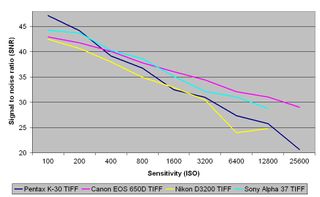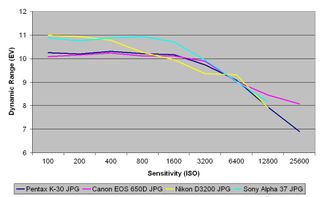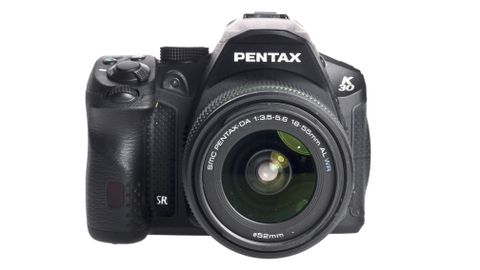Why you can trust TechRadar
We shoot a specially designed chart in carefully controlled conditions and the resulting images are analysed using DXO Analyzer software to generate the data to produce the graphs below.
A high signal to noise ratio (SNR) indicates a cleaner and better quality image.
For more details on how to interpret our test data, check out our full explanation of our noise and dynamic range tests.
JPEG signal to noise ratio

At the lower sensitivity settings the Pentax K-30 produces JPEGs that have plenty of detail and well-controlled noise, beating the Canon 650D, Nikon D3200 and Sony Alpha 37.
Raw signal to noise ratio

At ISO 100 and 200 the Pentax K-30's raw files (after conversion to TIFF) have a very high signal to noise ratio, indicating that they contain lots of detail and little noise. However, from around ISO 400 the performance dips below that of the Canon 650D and Sony Alpha 37, only just beating the results from the 24MP Nikon D3200.
JPEG dynamic range

Throughout most of the sensitivity range the Pentax K-30 produces JPEGS that are a good match for the Canon 650D for dynamic range. With a range of 10EV up to around ISO 1600, it's able to capture tonal gradations very well, but it doesn't score quite as highly as the Sony Alpha 37 or the Nikon D3200.
Raw dynamic range

Raw files (after conversion to TIFF) arguably reveal a camera's true dynamic range as they contain the maximum amount of data. With a range that almost reaches 13EV at the lowest sensitivity setting the K-30 really impresses and it suggests that the JPEG files are processed to give a contrast boost to produce more pleasing images straight from the camera.
Current page: Noise and dynamic range
Prev Page Image quality and resolution Next Page Sample images
